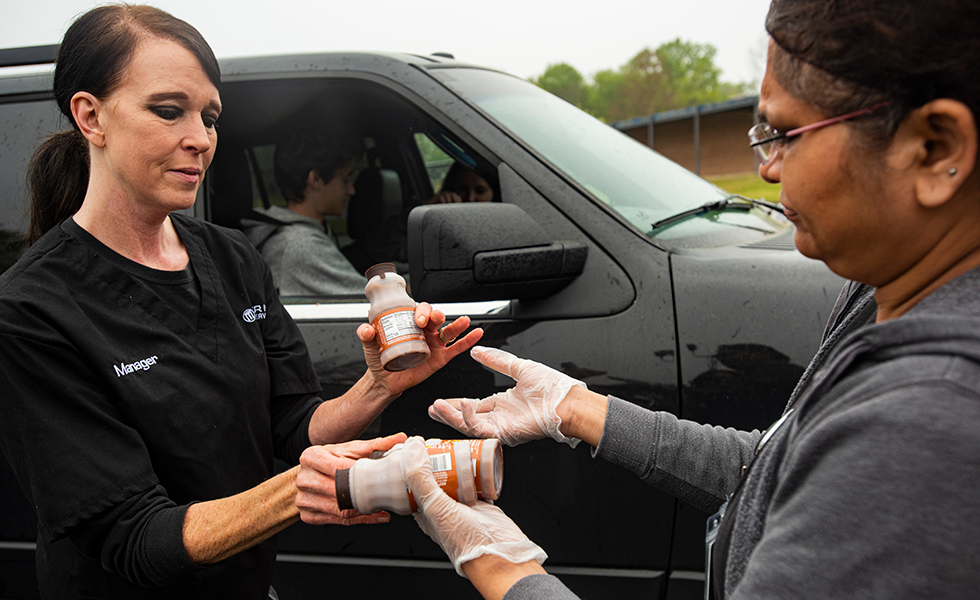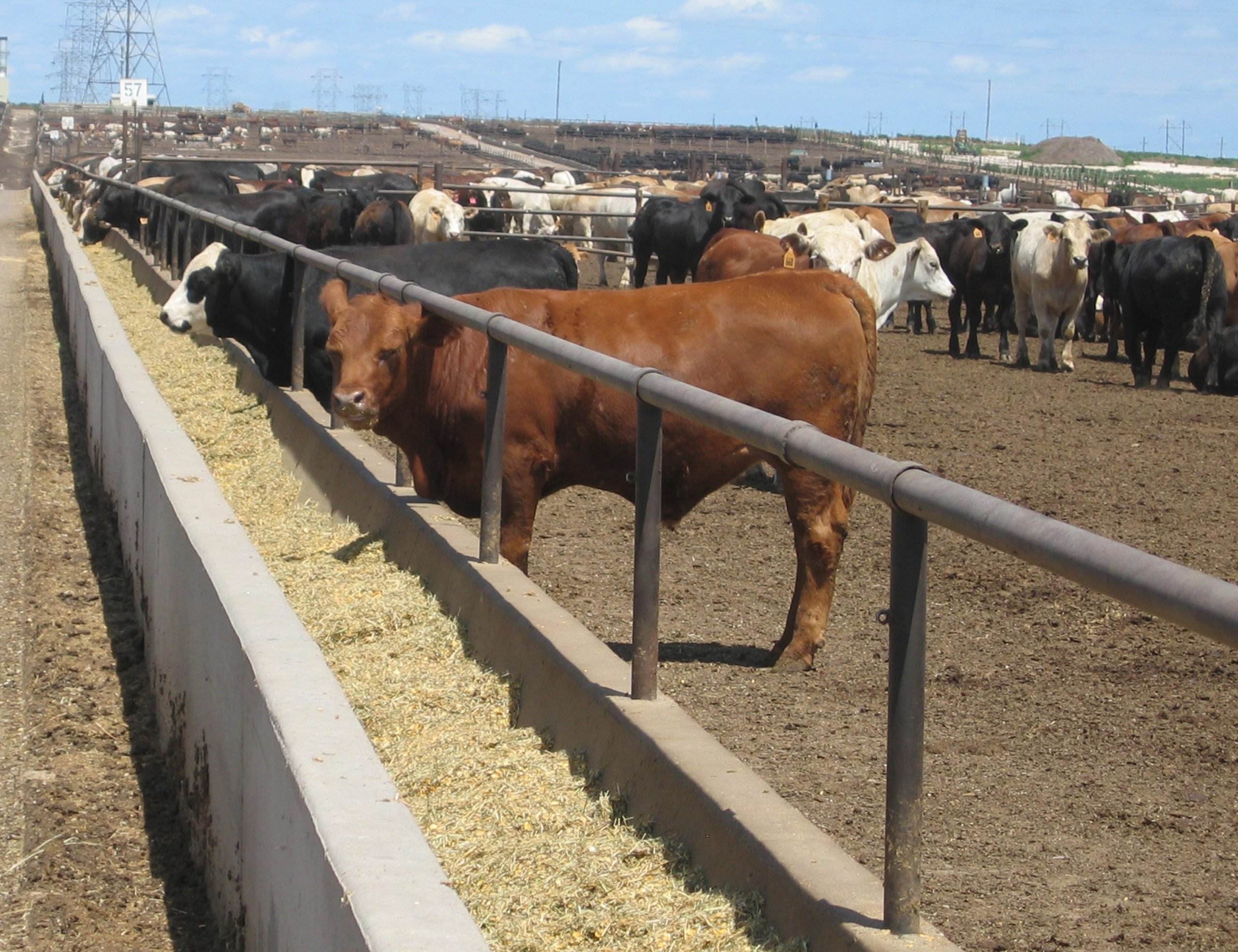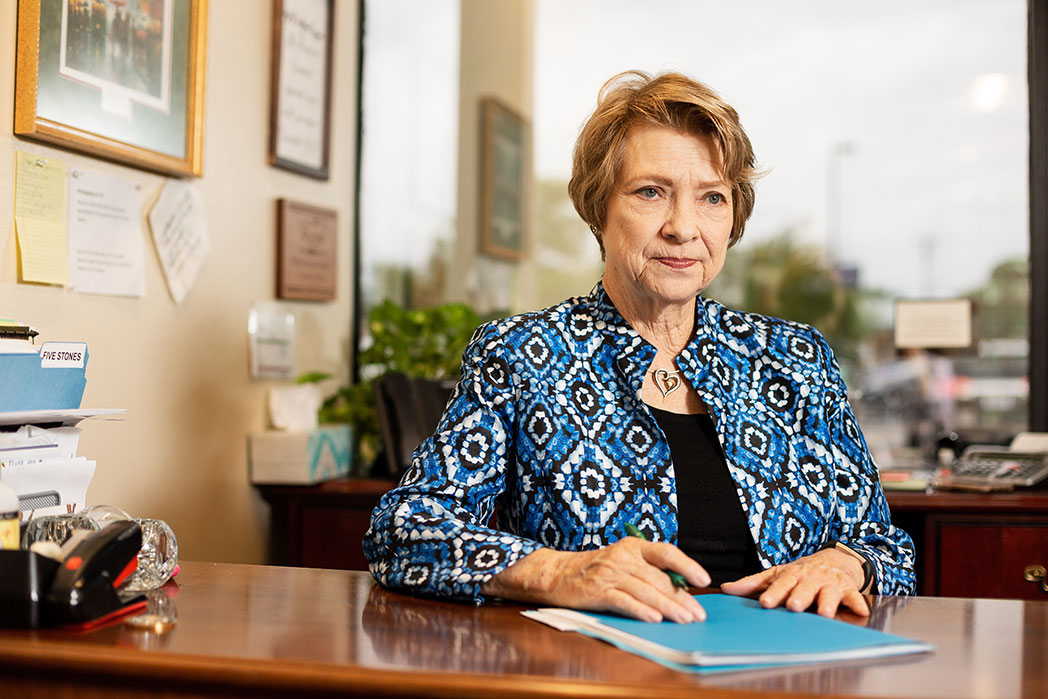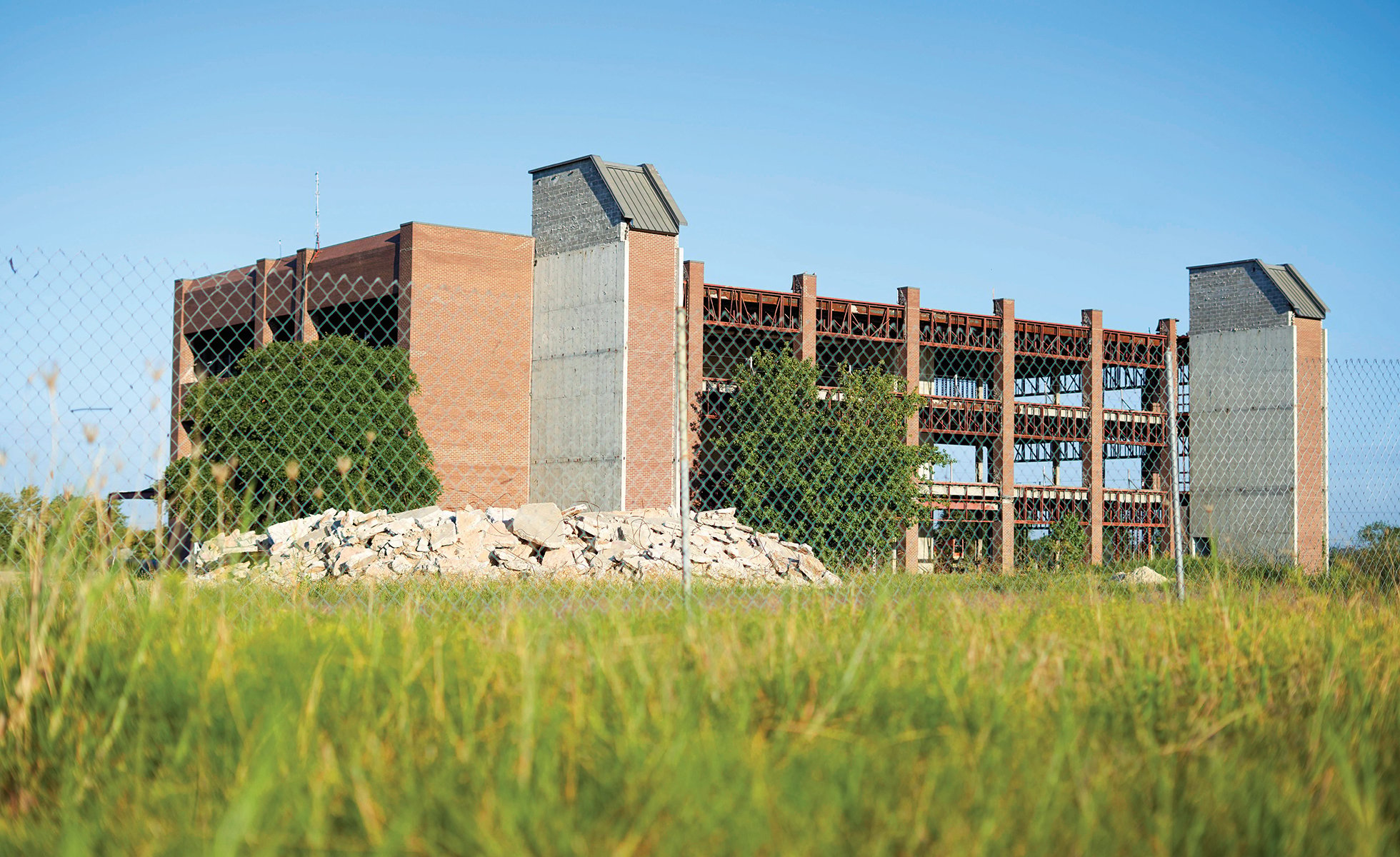
+ + +
On the evening of December 28, 2014, Kourtney Bogan got an urgent call from her younger brother in Clarksville, a rural town of 3,200 bordering Oklahoma in far northeast Texas. Their mother, Gayla Bogan, who’d been fighting a respiratory infection over Christmas, was in bad shape. Kourtney jumped in her car and drove over. “When I got there, she was gasping for air, like she couldn’t breathe or something was blocking her airway,” Kourtney said. “I was panicking. She kept saying that she couldn’t breathe.”
Kourtney and her brother, Bristian, tried sitting Gayla upright in a chair, but it didn’t help. A minute later, she became “nonresponsive,” Kourtney said. She called 911. Within five minutes, an ambulance had arrived at the house, and workers loaded Gayla into the vehicle. They sped off to the nearest emergency room—a 30-minute drive to Paris Regional Medical Center in neighboring Lamar County.
Kourtney didn’t know it at the time, but Gayla, a 47-year-old who served as a church usher and worked as a nurse at a local nursing home, was having a heart attack. As the ambulance sped northwest on a thin strip of oak-lined highway, paramedics tried desperately to revive her.
The timing couldn’t have been worse.
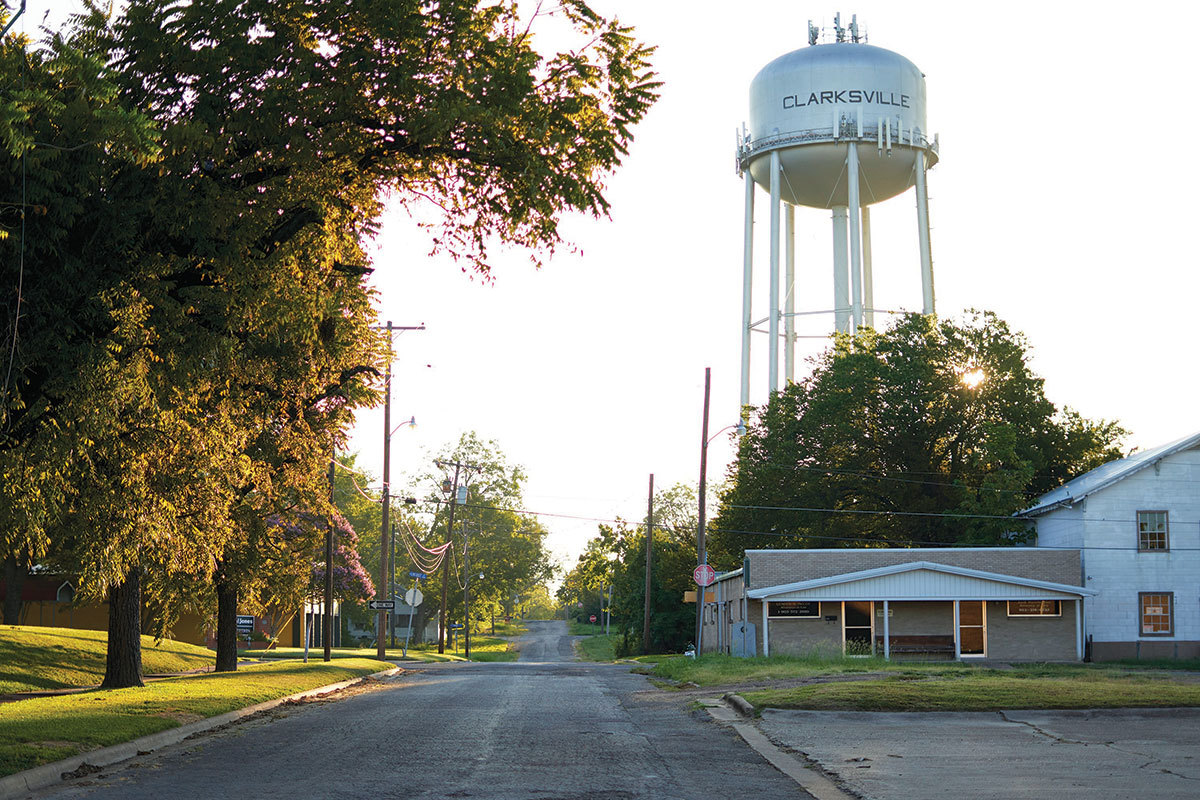
If Gayla had gone into cardiac arrest just two weeks earlier, the travel time to the nearest hospital would have been only a few minutes. East Texas Medical Center had operated a rural hospital with an emergency room in Clarksville. But in December 2014, ETMC shuttered the Clarksville hospital along with two other facilities in surrounding Gilmer and Mount Vernon—casualties of low patient volumes, cuts to reimbursement rates from Medicaid and Medicare, and the cost of treating the uninsured. The closures rocked the small communities, upending what had been reliable sources of health care for decades.
More than 20 rural hospitals have closed in Texas since 2013, nearly double the number of closures of any other state, and about one-fifth of the total closures around the country in that time period. Many of the approximately 3 million Texans living outside the state’s major metros are left scrambling for care when emergencies crop up. Some of the approximately 160 rural Texas hospitals that have managed to keep their doors open have done so by cutting crucial services such as emergency care and maternity wards. According to health analytics group iVantage, 75 of Texas’ small-town hospitals are at risk of closure.
Though the reasons for rural hospital closures are numerous, the root cause is financial. According to hospital administrators, physicians, and health care experts across the state, the Legislature has hamstrung the facilities and helped seal their fates by failing to relieve some of the financial pressure with a simple fix: expanding Medicaid through the Affordable Care Act. Doing so would extend health care coverage to 1.4 million uninsured Texans and provide much-needed revenue for hospitals, which shoulder the burden of treating the uninsured. Emergency rooms have to see patients regardless of their ability to pay, sometimes pushing hospitals teetering on the financial brink into insolvency.
In East Texas, as the ambulance rushed from Clarksville to Paris, Kourtney tried to keep up, trailing the vehicle in her own car. When she arrived at the hospital, friends and other family members had already begun to crowd into a waiting area in the emergency room. Some were so worried about Gayla that they’d left work, still wearing uniforms from their jobs.
Then a few minutes later, around 10 p.m., a doctor told the crowd of 50 people packed into the waiting room that Gayla had died. She never made it to the hospital alive; her heart gave out in the ambulance, shortly before arriving in Paris.
“When the doctor came in and told us she didn’t make it, it was just a lot to take in,” Kourtney, now 29, recently told us. After the initial shock wore off, she began to wonder whether the outcome would have been different had the Clarksville hospital remained open. “I always feel like the ‘what ifs’ are in our head. Like, ‘What if we had a hospital where she could have gotten stable?’” Kourtney said. “We don’t know. But us not having a hospital close started what I feel like is a string of people not getting to the hospital fast enough.”
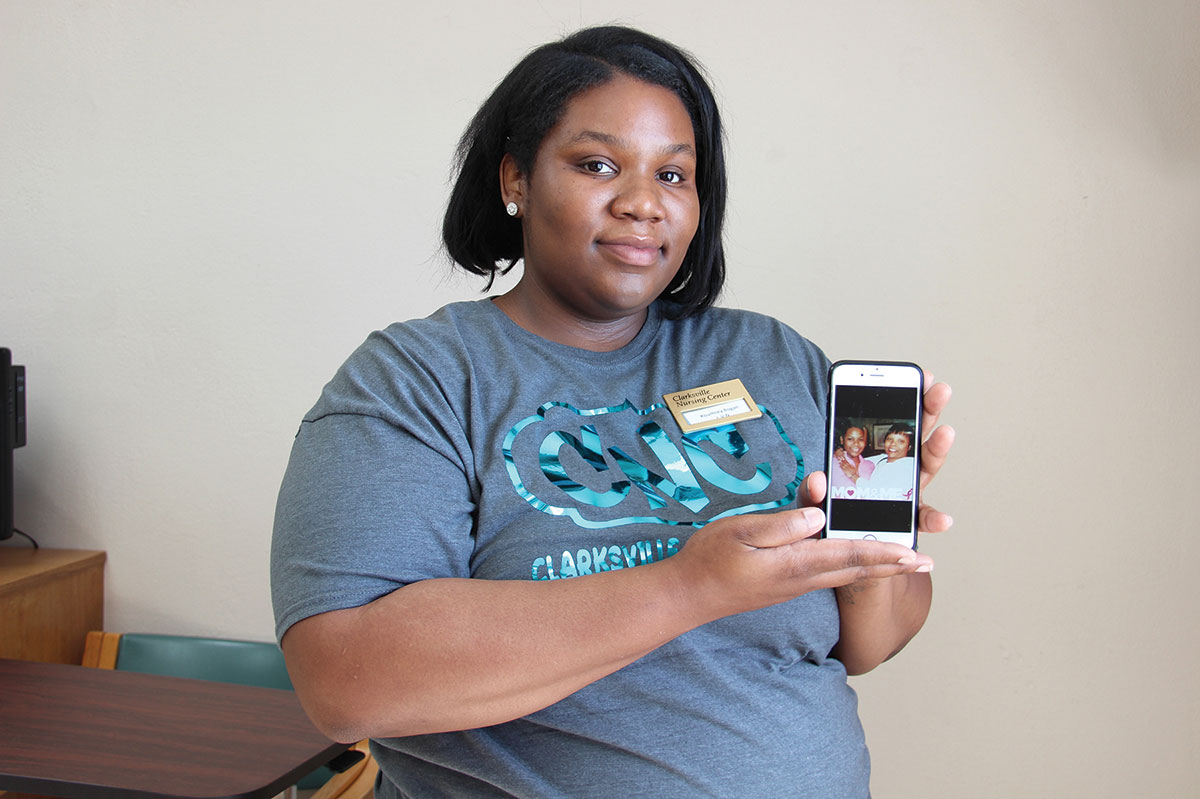
According to Dr. Bacharanianda Muthappa, who runs a clinic next door to the old hospital and is the only full-time physician still practicing in Clarksville, longer travel times to Paris may have contributed to 10 patient deaths since December 2014. Experts say that patients see higher survival rates from medical emergencies such as heart attack and stroke when they receive care quickly. This year, the National Bureau of Economic Research found that rural hospital closures caused mortality rates in surrounding areas to rise nearly 6 percent.
Rural populations tend to be older, poorer, and in worse health than those living in urban areas. Nearly 30 percent of Red River County’s more than 12,000 residents are 62 or older. Without a hospital here, Muthappa and others interviewed for this story predict more preventable deaths.
“You’re looking at extended transport times with a critical patient. It can be a bad outcome,” said Clifton Brown of LifeNet Emergency Medical Service, which provides ambulances in the region and transported Gayla. “If you got somebody in cardiac arrest with a 30-minute transport, that’s a long way and a long time. We’ve either got to resuscitate on the scene or they’re not getting resuscitated.”
+ + +
When the Affordable Care Act was passed in 2010, part of the law required states to expand Medicaid to adults with incomes up to 138 percent of the federal poverty level. Knowing this would rankle conservative states, the federal government said it would cover the full cost of the expansion for the first three years, then 90 percent thereafter. But with a carrot came a stick: If states didn’t expand Medicaid to cover all newly eligible individuals, they would lose all federal funding for Medicaid. Predictably, a consortium of states—including Texas—subsequently filed a lawsuit against the federal government. The U.S. Supreme Court eventually upheld the rest of the ACA but found that the threat of pulling Medicaid funding was unconstitutional. States could now choose to opt in or out of the expansion.
Research shows that states that opted in have seen increased coverage, more access to care, state budget savings, and economic growth. Hospitals in expansion states were about six times less likely to close than those in states that opted out, a gap that is even wider in rural areas, according to a study published in Health Affairs last year. In states that expanded Medicaid, research shows uncompensated care costs—service costs that poor patients can’t pay and that hospitals are on the hook for—dropped 47 percent in the years following ACA implementation, compared to just 11 percent in states that didn’t.
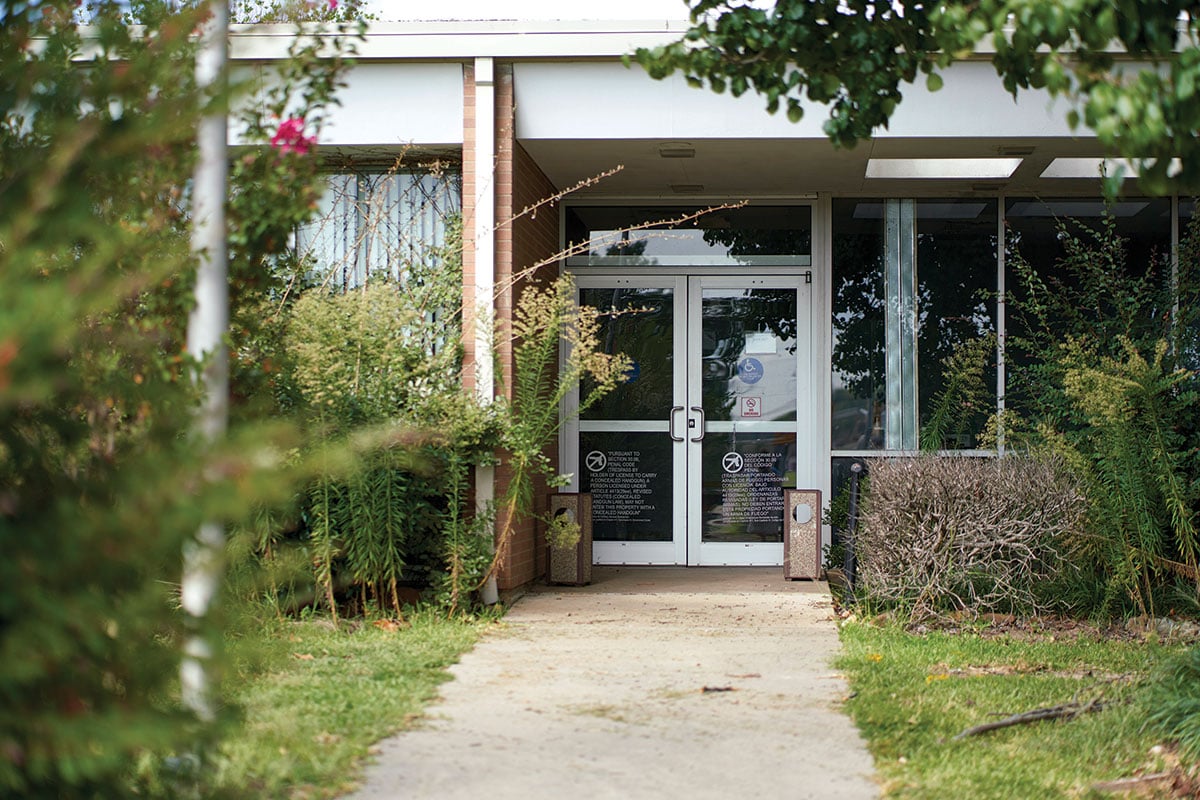
Despite having the highest uninsured rate in the nation, Texas opted out of Medicaid expansion. State data shows that caring for uninsured patients cost hospitals $6.66 billion in 2014. That year, the state paid $329 million to reimburse rural hospitals for these costs. As the Texas Health and Human Services Commission (HHSC) put it, “uncompensated care costs continue to increase and funding is inadequate to attenuate the deficits hospitals face.” (The gap narrowed on October 1, when HHSC announced a 25 percent increase in general federal Medicaid funding to reimburse those costs statewide.)
In Red River County, where Clarksville is the county seat, the uninsured rate for people under age 65 in 2017 was 19.6 percent, just higher than the state average of 19.4 percent that year. In Upshur and Franklin counties, home to Gilmer and Mount Vernon, the uninsured rates were below the state average but still nearly double the national rate. Caring for uninsured patients cost the three ETMC hospitals in those towns $2.9 million collectively in fiscal year 2014.
The ongoing crisis led advocates and medical professionals to flood the Texas Capitol this spring to implore Republican lawmakers, who hold all executive leadership positions and control both chambers of the statehouse, to expand Medicaid. Texas is one of just 14 states that continues to reject the expansion, which would bring an estimated $100 billion in federal funds to the state over the next decade. The decision is driven in part by cost concerns and the fear that the federal government will renege, leaving the state to foot the bill. But it’s also largely motivated by politics—the same politics that have led congressional Republicans and the Trump administration to continue fighting Obama’s signature health care law a decade later. This adversarial stance is unlikely to change soon, especially since rural residents overwhelmingly elect conservative lawmakers—politicians who advocates say vote against their constituents’ interests on this issue. “Rural Texans have been faithful to Republican lawmakers; they need to be faithful to them,” Douglas Curran, a physician in Athens, Texas, and then-president of the Texas Medical Association, told the Observer earlier this year.
Things may soon get worse, advocates say. Some money to help shoulder the cost of uncompensated care comes through Texas’ Medicaid 1115 waiver, a $25 billion deal between Texas and the federal government that’s been used as a Band-Aid in the absence of Medicaid expansion. This waiver funding is set to expire in 2021, leaving hospitals with one fewer financial tool to stay solvent.
In a March committee hearing on a bill that would expand Medicaid coverage, the first hearing on such a measure in years, Anne Dunkelberg, who oversees health policy for the Austin-based Center for Public Policy Priorities, said passing some kind of coverage expansion “is one of the most powerful tools we have to hold on to that funding.” Curran also testified, warning that the rural hospital crisis could be just the beginning. “The canary in the coal mine is our rural hospitals. Bigger hospitals are going to start having the same issues. … The strain on the system is going to continue,” he said. “We need to draw down every federal dollar we can, to move in a direction where we can take better care of our people.” Curran implored lawmakers to call Medicaid expansion whatever suits them politically but to do what’s best for their constituents. “We’re Texans. We solve problems. We need to solve this problem.”
The bill failed. Four others that would let voters decide whether to expand Medicaid in Texas didn’t get a committee hearing. Meanwhile, the U.S. Census’ most recent data shows that the state’s uninsured rate increased for the second year in a row in 2018, following several years of steady decline—a reversal due at least in part to the Trump administration’s attempts to weaken the ACA. An ongoing national lawsuit led by Texas and backed by the White House seeks to eliminate the health care law, which could kick millions more Americans off their insurance.
When a hospital shuts down, everyone in the community loses—the insured and uninsured alike. The hospitals in Clarksville, Gilmer, and Mount Vernon, which closed simultaneously in December 2014, are now in various stages of disrepair. The Clarksville building is a mere skeleton; the steel support beams and concrete floors are all that remains of the three-story structure. It’s an apt symbol for the town of Clarksville, where factories and manufacturers have packed up and moved to other towns with better highway access. Even the Walmart on Highway 82 is vacant. Local public officials say it’s difficult to recruit businesses to set up shop in a town with no functional hospital. In Gilmer, an hour southeast of Clarksville, what was once a hospital is now an empty lot; the building has been ripped out, foundation and all. What was once a clinic sits vacant on the lot’s north side. Mount Vernon’s old hospital building still looks the part, save the vines creeping up the walls and underneath the window frames. Franklin County is trying to sell it as retail or office space.
+ + +
Against all odds, Clarksville could be the first small Texas town to get a brand new hospital amid the current closure crisis.
On a scorching August afternoon, Dr. Arjumand Hashmi picks his way through a waterlogged patch of dirt on Clarksville’s far western edge, finally finding shade under the roof of the former ETMC-Clarksville. There’s not much here now: The building is so bare-bones that local residents say you can tour the place simply by driving past. But Hashmi, a cardiologist and former mayor of Paris, has had the empty space mapped out for years.
The doctor’s efforts to resurrect Clarksville’s hospital began in 2014, after ETMC announced the hospital’s pending closure. Back then, Hashmi’s bid to reopen the place was one of two; the other was made by Paris Regional Medical Center. The hospital authority board chose the nearby hospital over Hashmi, but after months of back and forth, Paris Regional pulled out. About a year went by before the board tapped Hashmi for the project.
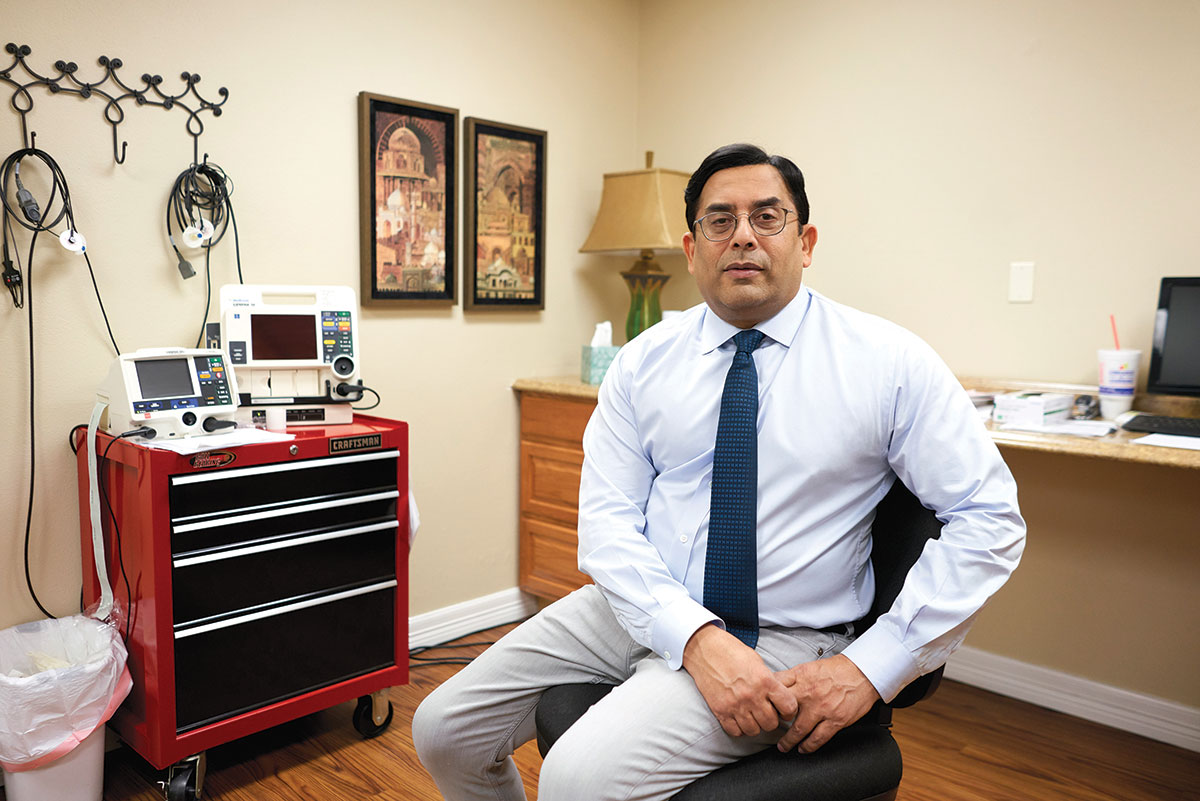
When he resumed plans for the 35-bed facility, he got bad news. The board had surrendered the hospital’s license to the state, thus revoking the grandfathered status for building codes. He’d have to tear down and rebuild nearly the entire structure. He’s run into other headaches, too, including a bank withdrawing its funding and repeated construction delays.
For years, Hashmi has reassured community members that he’s as dedicated as ever to the project, but his patience is wearing thin. It’s been “one thing after another thing after another thing,” Hashmi said. What was originally intended as a renovation has dragged into a yearslong, multimillion-dollar project that’s tested the will of Hashmi and his local supporters. Some residents, including Kourtney Bogan, are increasingly doubtful that they’ll ever see a hospital in Clarksville again.
• American Health Care is Broken, Especially in Texas. What Can We Do About It?
• ‘How Can You Do This to People?’: After Rural Hospitals Close in Milam County, Residents Scramble to Find Care
• Yet Another Rural Texas Hospital is in Jeopardy After Anti-Tax Activists Kill Funding Proposal
Even Hashmi’s fans seem incredulous of his determination to bring a state-of-the-art facility to Clarksville, where there are more than 80 abandoned buildings ready for demolition and where city leaders have tried fruitlessly to recruit new businesses and create more jobs. “Anyone else would have given up,” said Red River County Judge L.D. Williamson. “He’s moved heaven and hell.”
The ongoing process has reinforced a health care truism: It’s far more difficult to open facilities than to close them. Even if Hashmi were to finish the project today, the whole ordeal would still have eaten up nearly five years. In that time, more than a dozen hospitals closed across the state. This summer, at least three shuttered, including a hospital in Chillicothe in the southern Panhandle and another in Grand Saline, less than two hours south of Clarksville.
So why should Hashmi’s hospital succeed where others have failed? He hopes an extensive cardiology department will help fund less lucrative services, including losses from uncompensated emergency care, and that the sweeping new facility will attract patients and doctors from miles away.
The people of Clarksville are counting on him: Each hospital closure forces rural Texans to cope with the real-life impacts. Those include a dearth of doctors, long travel times for emergency care, and, in some cases, death. Both Muthappa and Hashmi say they know of several patients who, like Gayla, died on the half-hour drive to Paris Regional. James Wood, a member of the hospital authority who once ran a local funeral home, does too. “I’ve buried them,” he said.
When a hospital closes, doctors tend to leave too. Muthappa says he was one of eight doctors in Clarksville when he arrived 40 years ago. Now, it’s basically just him. The doctor, who says he’s “over 70,” thinks often about retiring but worries about leaving people stranded. Besides Muthappa’s 8-to-5 practice, there’s a daytime urgent care clinic staffed by nurse practitioners. Another doctor in Clarksville practices only on Mondays and Tuesdays. No medical services are available on the weekends.
“Trying to recruit a physician to Red River County without a hospital is very difficult,” said Rob Riley, executive director of Clarksville Nursing Center, where Muthappa is the medical director and Kourtney now works as a nurse. “Three years or five years from now, if there’s not a hospital for physicians to anchor to or call home, will there be physician services in Red River County?”
Clarksville Mayor Ann Rushing hopes the new hospital will be a “saving grace” for the town that’s been withering since its “boom” in the ’80s. Each rural hospital closure means an average of 170 jobs lost, according to the Texas Organization of Rural and Community Hospitals. Closures have a domino effect on businesses, schools, and the local economy. Even the jail won’t house inmates in Clarksville anymore without a hospital nearby, Rushing says, costing the city lucrative contracts.
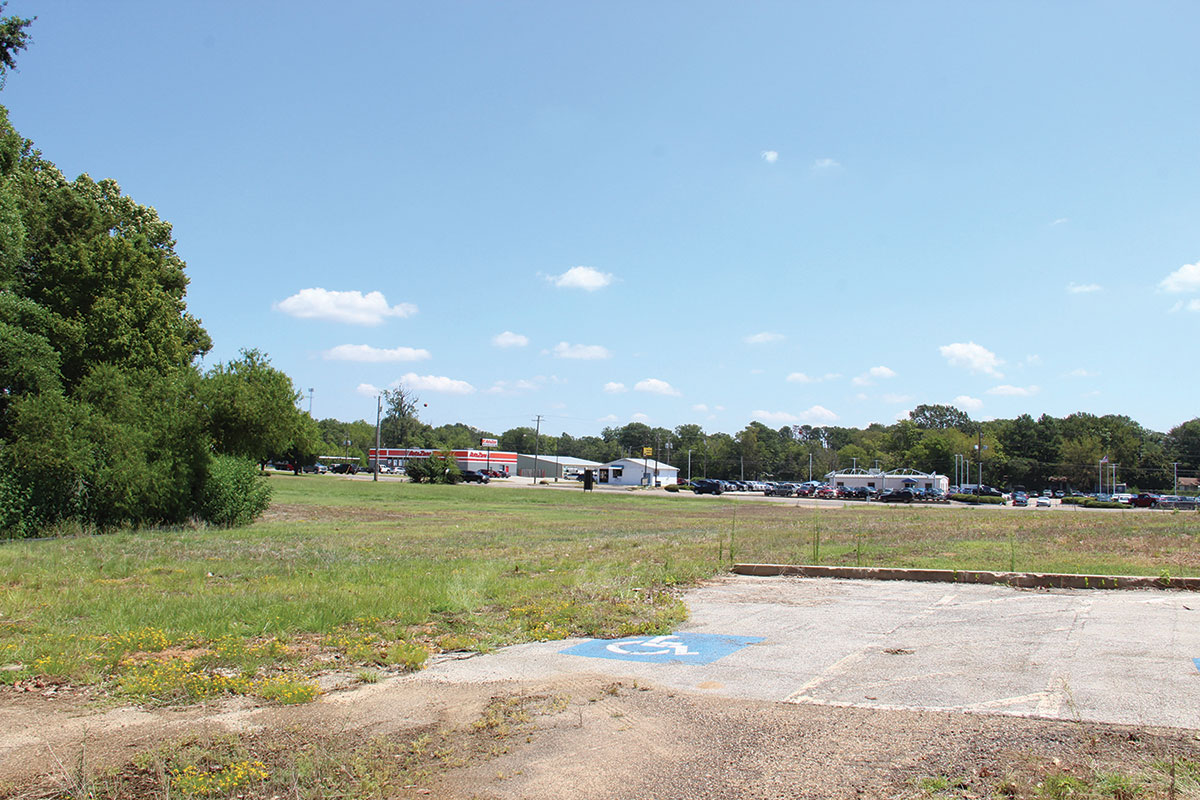
In June, Hashmi got the loans and approval to finally start construction for the new hospital. If all goes according to plan, construction should be complete and the hospital open by next winter. He and local leaders are optimistic. “It’s incredible we could expect this here,” said Wood, the former funeral director. Sitting on a couch in his mobile home on a corner lot on Digger Road, across the street from a cemetery, he added: “We’re thrilled to death.”
In Gilmer, about 70 miles southeast of Clarksville, public officials have also scrambled to bring services back to the town of 5,200 since its hospital closed five years ago. It seems unlikely that the town will ever have a traditional hospital again. But there may be a middle ground to restore some services: Community leaders are talking to hospital operators about opening a 24/7 health clinic, where specialists such as cardiologists could provide services once or twice a week.
But there’s no Hashmi in Gilmer to raise capital; any health care facility that comes to town will likely need to be supported by tax dollars. A tax as little as 5 cents per $100 property valuation could generate millions of dollars, which would go a long way, said City Manager Greg Hutson. But levying taxes here could be problematic. It took years of failed attempts before the school district was able to pass a $35-million bond to replace the aging Gilmer High School that was built in 1948. (The football team suits up in lavish locker rooms, however.) Residents are so tax-averse that county commissioners once swatted down a 50-cent tax on vehicle registrations to provide car seats for indigent children. “People will say they’re on a fixed income and can’t afford any more taxes. I understand that. I don’t like taxes either,” said Mayor Tim Marshall. But having a hospital, or at least a clinic, he said, would be worth it.
Rural hospitals have increasingly turned to taxpayers to try to make ends meet, usually through propositions to create new taxing districts. The results have been mixed. In several cases, such as in Bowie and La Grange, anti-tax forces converged to bat down such propositions, even when it meant not having a hospital in the county. Hutson expects the same would happen in Gilmer, but he wants a vote anyway—if for nothing else, so people will stop yammering about the hospital.
+ + +
Just before 7 a.m. on a rainy August morning, L.D. Williamson is on his second cup of coffee at the Clarksville McDonald’s. Tall, with a flash of white hair, Williamson outdresses anyone else there in a lavender button-down shirt and striped purple tie. The McDonald’s is an early morning gathering spot for farmers, county officials, and city workers; other than the Sonic and Dairy Queen, Clarksville has few eateries. This has become something of a ritual for the 82-year-old county judge: Every morning for the last five years, he’s come for two cups of watery coffee, some breakfast, and an earful from local residents about the hospital.
Today, Williamson is joined by a few white-mustached men near his age in baseball caps and jean shorts. Rainwater leaks through the fast-food joint’s roof, forming small puddles on the floor near their plastic table. One of their favorite pastimes is waxing nostalgic about Old Clarksville, where gas stations stayed open all night, cars “zip zip zipped” on the highway through town, and storefronts bustled on the main square. Now things are different, they say. Motorists prefer to zip by on Interstate 30, which bypasses downtown. The square went from bustling to barren. Young people tend not to stick around after graduating from high school since few jobs are available. With no hospital, the men drive to Paris, Tyler, even Dallas to see their doctors; they worry the ambulance service, stretched thin and overwhelmed, could be the next service to fold. Before LifeNet came along, the funeral home ran the only ambulance service in town.
“This is a dying town,” said Dan Williams, a local man the others call “Dangerous Dan.” He wears a white T-shirt and dark overalls and has a nasty scrape near his eye. “If something don’t happen here in Clarksville,” Williams said of the hospital closure, “the only people that’s going to be making money here is the undertakers.”
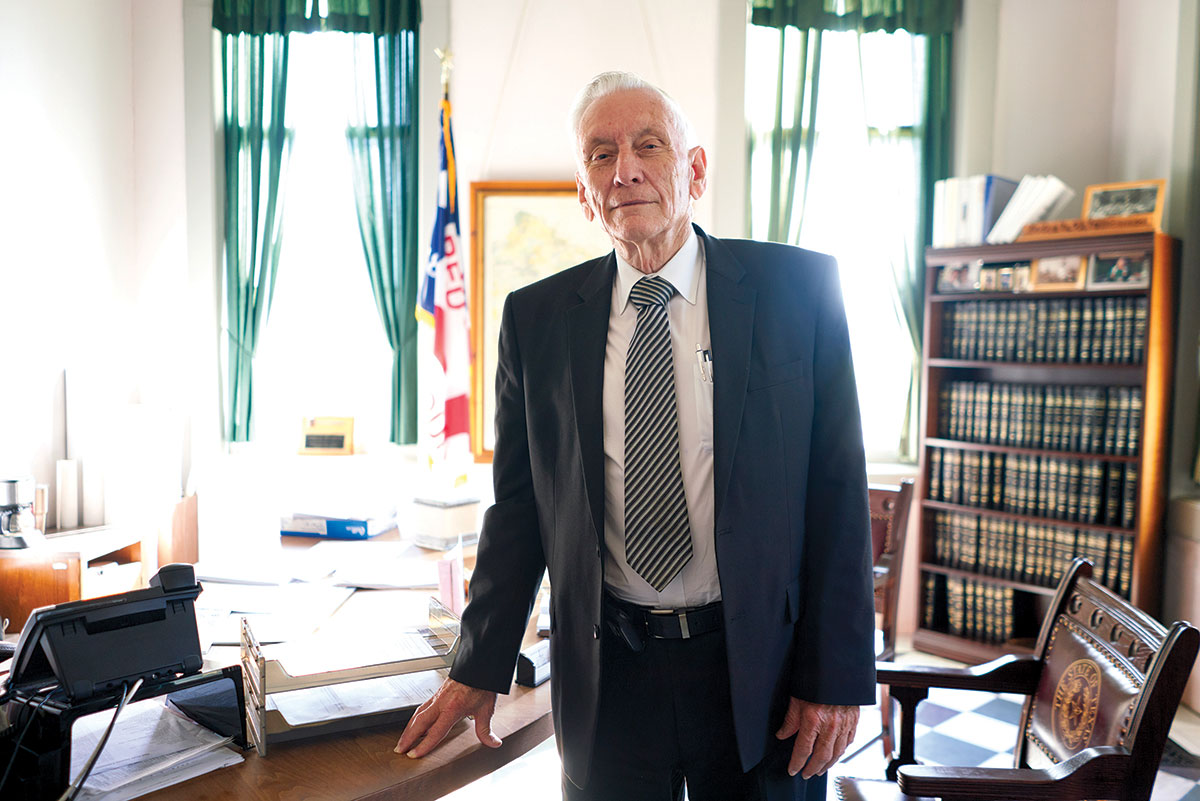
The subject of the hospital comes up at McDonald’s every morning, and people are evenly split on whether it will ever actually be built, Williamson said. He doesn’t blame them. “It’s become a standing joke at the McDonald’s: People ask how long the new hospital will take and I say two-and-a-half weeks,” he said. “I’ve been saying that for four years.”
Some of Hashmi’s plans seem peculiar for a poor rural town that has struggled to keep even basic businesses open; Williamson is skeptical of the gourmet restaurant planned for the hospital lobby, for one. And he wishes they’d picked a new, more inspired name than Clarksville General Hospital. But it’s too late to change. Hashmi has already ordered boxes of china plates for the restaurant, each embossed with “CGH” in gold across the center. Williamson rolls his eyes and chuckles. But he credits Hashmi for his persistence. “If we can get it done, it will be the best thing to happen in this part of the world.”
For Williamson, the fight for a new hospital is personal. On July 22, 2015, seven months after the Clarksville hospital closed, Williamson’s wife, Margaret, walked into the living room of their home complaining of a bad headache. She’d had headaches before, but none this severe. Thinking of the cost and time it would take to wait for an ambulance, Williamson drove her the 30 miles to Paris Regional Medical Center.
Margaret and L.D. met in high school in southeast Texas and married young: Margaret was 17, L.D., 19. In 1975, they moved to Clarksville, where L.D. worked for years at an old-timey dime store that he says sold “a little bit of everything and a whole lot of nothing.” Margaret operated machinery at the Campbell’s soup factory just outside town. The couple had opposite but complementary personalities: Margaret was shy and reserved; L.D. affable and magnetic. When L.D. got into local politics a few decades ago, Margaret avoided the limelight. Still, the couple was practically inseparable during their nearly 60 years together.
As they drove to the emergency room on that July day, Margaret seemed to be holding up OK. Just after crossing the county line on the way to Paris, they made a quick stop at a gas station in Blossom for a Sprite to settle her stomach. Fifteen minutes later, they pulled up to Paris Regional Medical Center and hurried into the emergency room. Luckily, Williamson says, it was less crowded than usual, and doctors saw her quickly. Then, a troubling discovery: Physicians found bleeding caused by a ruptured brain aneurysm. Margaret was sent by helicopter to a hospital in Plano for more advanced treatment. Shortly after, she lost consciousness.
Margaret never woke up. Five days after that fateful drive to the closest hospital, Williamson and their five children decided to disconnect her from life support. She was 76.
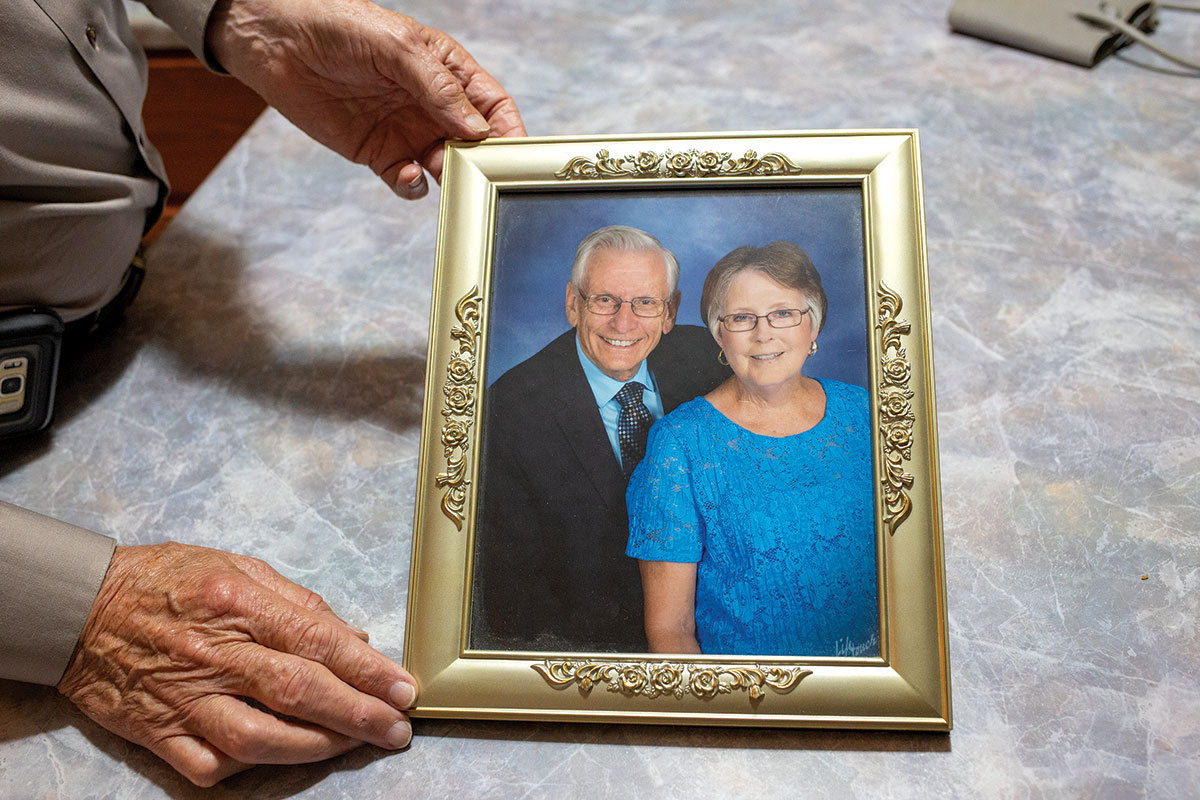
Williamson still feels guilty for driving Margaret to Paris instead of calling an ambulance; maybe paramedics could have prevented some of the damage. But mostly he wonders whether things would have been different if the Clarksville hospital had still been open. “We’d have gotten there much quicker. The damage would have been a lot less,” he said.
It’s something on the minds of everyone in Clarksville, where residents are linked by one or two degrees of separation. With an aging population, and nursing homes and funeral homes outnumbering just about everything but churches, the fear of not making it to a hospital is top of mind. “[People] didn’t die in Clarksville; they died somewhere between here and Texarkana, here and Mount Pleasant, here and Paris,’” said James Hodgson, a Clarksville resident, over a McDonald’s breakfast. “The obituaries today for Clarksville [might as well] say, ‘died in transit, died on the road.’”
Williamson has his plan set. If he ever needs to, he’ll move to the nursing home down the street, where Kourtney Bogan works. He’ll be buried by the same funeral home as Margaret. His headstone, complete with name and birth date, is already in the ground next to hers. Meanwhile, he brings white roses to her grave at least once a week. He eats breakfast at McDonald’s—a new routine since Margaret died. And he’s doing everything he can to see a new hospital in Clarksville open in his lifetime. Margaret had said it would never happen, Williamson recalls with a smile. “We’re going to prove her wrong.”
+ + +
Kourtney isn’t so sure. The myriad setbacks and delays have caused her frustration to boil over. “We’re coming up on five years since the hospital closed, and we still have nothing,” she said on a recent lunch break from work at Clarksville Nursing Center. “These people need it. The people outside of these walls need it. We need a hospital.”
Around New Year’s Eve in 2014, as Kourtney started to make arrangements for her mother’s funeral, she found a stack of unopened Christmas presents in Gayla’s closet. Gayla died just three days after the holiday, and because she was sick, she hadn’t gotten around to giving them out. One of the gifts was an enormous stocking filled with candy and toy trucks for Kourtney’s then-3-year-old son, Kingston. “The stocking was as big as him,” she said. Others were for residents at the nursing home where Gayla worked. “I knew I had to give those gifts,” Kourtney said. “They bawled their eyes out. It was so sweet.”
In 2016, spurred by Gayla’s death, Kourtney went back to school. She was already working as a certified nurse’s assistant at the time, but she applied for a more advanced nursing program in Idabel, Oklahoma, just across the state line from Clarksville. On the application, Kourtney cited her mother’s death as her primary motivation. “I felt like I couldn’t let her die in vain,” Kourtney said.
Inside a spartan conference room at the nursing home, Kourtney wipes tears from her eyes. A clock on the wall ticks away, words at its center reading, “Time spent with family is time well spent.” Kourtney wishes she had gotten to spend more time with her mother. On special occasions, to remember Gayla, Kourtney wears one of the dresses she inherited from her mom. Kourtney’s favorite—one that she coveted as a child—is black with ruching at the top and a blue jacket, the perfect choice for church functions. “It makes me feel like her. Like she’s right there with me,” Kourtney said. In December, for Gayla’s birthday, Kourtney likes to make banana pudding using her mom’s recipe. Soon, Kourtney will have another reminder of Gayla around: She’s due to give birth to a girl in November. She hasn’t decided on a name yet, but one she’s considering is Kayla—a tribute, of course, to her mother.
